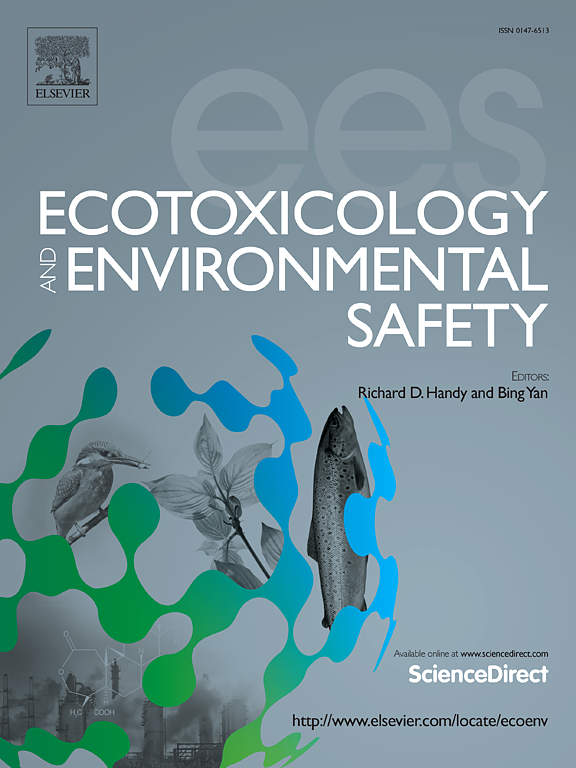Lipid metabolism-mediated fertility decline in male mice exposed to Fluorene-9-bisphenol: An integrated DNA methylation and transcriptomics analysis
IF 6.1
2区 环境科学与生态学
Q1 ENVIRONMENTAL SCIENCES
引用次数: 0
Abstract
Fluorene-9-bisphenol (BHPF), a widely recognized alternative to bisphenol A (BPA), has been increasingly used in a wide range of industries. However, despite numerous studies, the direct mechanism underlying its male reproductive toxicity remains poorly understood. Here, a BHPF-exposed mouse model was established to evaluate the effect of BHPF on male fertility. The results showed that BHPF exposure induced reproductive dysfunction, including testis damage, spermatogenesis impairment, steroid hormone disruption and sperm quality degradation. Mechanistically, over 90,000 differentially methylated regions were identified and increased global testicular methylation levels indicated that DNA methylation may be associated with BHPF-induced testicular damage. Transcriptome analysis revealed 221 up-regulated genes and 227 down-regulated genes in BHPF-exposed mice, mainly enriched in the steroid biosynthetic pathway. Further combined methylome and transcriptome analysis revealed the critical methylated genes potentially involved in lipid metabolism. The differentially expressed genes (Cyp4a10 and Rdh1) were further confirmed to correlate with impaired male mouse fertility. Taken together, the results of this study provide a better understanding of the molecular mechanisms of toxicity effects induced by BHPF exposure from the perspective of methylome and transcriptome.
脂质代谢介导的雄性小鼠暴露于芴-9-双酚的生育能力下降:综合DNA甲基化和转录组学分析
芴-9-双酚(BHPF)是一种被广泛认可的双酚a (BPA)替代品,已越来越广泛地应用于工业领域。然而,尽管有大量的研究,其男性生殖毒性的直接机制仍然知之甚少。本研究建立了BHPF暴露小鼠模型,以评估BHPF对雄性生殖能力的影响。结果表明,BHPF暴露可引起生殖功能障碍,包括睾丸损伤、精子发生障碍、类固醇激素紊乱和精子质量下降。在机制上,超过90,000个差异甲基化区域被鉴定出来,睾丸甲基化水平的增加表明DNA甲基化可能与bhpf诱导的睾丸损伤有关。转录组分析显示,bhpf暴露小鼠中221个基因上调,227个基因下调,主要富集于类固醇生物合成途径。进一步结合甲基组和转录组分析揭示了可能参与脂质代谢的关键甲基化基因。差异表达基因(Cyp4a10和Rdh1)进一步证实与雄性小鼠生育能力受损相关。综上所述,本研究结果从甲基组和转录组的角度更好地理解BHPF暴露引起的毒性作用的分子机制。
本文章由计算机程序翻译,如有差异,请以英文原文为准。
求助全文
约1分钟内获得全文
求助全文
来源期刊
CiteScore
12.10
自引率
5.90%
发文量
1234
审稿时长
88 days
期刊介绍:
Ecotoxicology and Environmental Safety is a multi-disciplinary journal that focuses on understanding the exposure and effects of environmental contamination on organisms including human health. The scope of the journal covers three main themes. The topics within these themes, indicated below, include (but are not limited to) the following: Ecotoxicology、Environmental Chemistry、Environmental Safety etc.

 求助内容:
求助内容: 应助结果提醒方式:
应助结果提醒方式:


